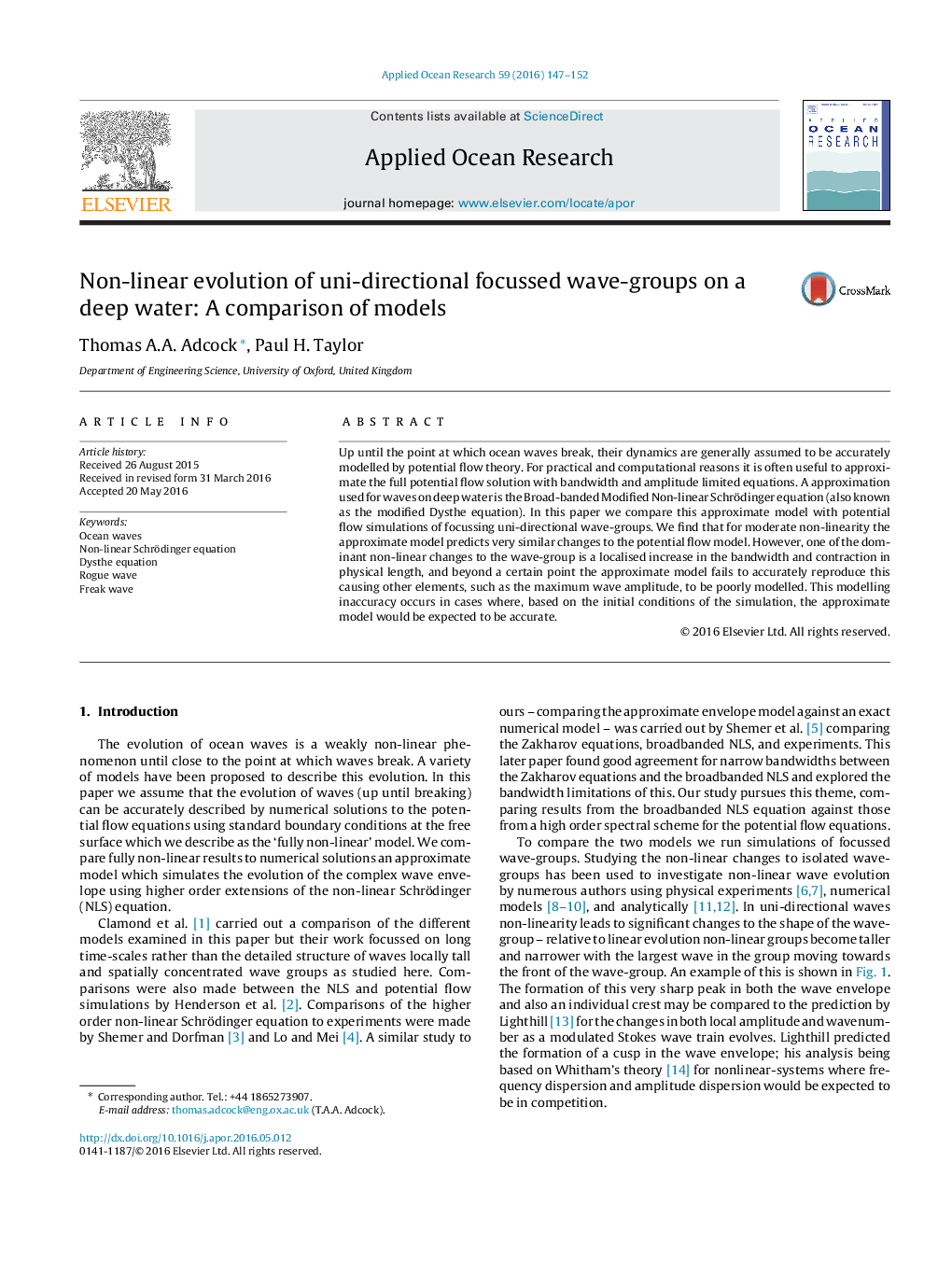| Article ID | Journal | Published Year | Pages | File Type |
|---|---|---|---|---|
| 1719770 | Applied Ocean Research | 2016 | 6 Pages |
•The non-linear changes to uni-directional wave-groups are studied.•A potential flow model and the broadbanded modified non-linear Schrödinger are compared.•The MNLS agrees with fully non-linear simulation for waves a moderate steepness.•Local non-linear broadening of the spectrum limits the accuracy of the MNLS.
Up until the point at which ocean waves break, their dynamics are generally assumed to be accurately modelled by potential flow theory. For practical and computational reasons it is often useful to approximate the full potential flow solution with bandwidth and amplitude limited equations. A approximation used for waves on deep water is the Broad-banded Modified Non-linear Schrödinger equation (also known as the modified Dysthe equation). In this paper we compare this approximate model with potential flow simulations of focussing uni-directional wave-groups. We find that for moderate non-linearity the approximate model predicts very similar changes to the potential flow model. However, one of the dominant non-linear changes to the wave-group is a localised increase in the bandwidth and contraction in physical length, and beyond a certain point the approximate model fails to accurately reproduce this causing other elements, such as the maximum wave amplitude, to be poorly modelled. This modelling inaccuracy occurs in cases where, based on the initial conditions of the simulation, the approximate model would be expected to be accurate.
